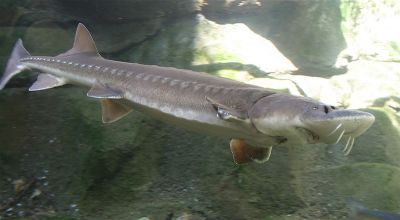The aim of the 'Fishing for markers of effluent exposure using metabolomics' (FISHMETABOLOME) project was find an array of biochemicals that can identify markers for exposure to and the effects of wastewater effluent on fish. In particular, researchers investigated changes in fish blood plasma metabolites and identified marker metabolites for use in monitoring fish exposure to toxic contaminants.
Sexually mature roach (Rutilus rutilus) were exposed either to water contaminated with effluent from wastewater treatment works or to a clean water control. After 15 days the fish were anaesthetised and the plasma and tissues removed and analysed.
The plasma samples were extracted using techniques developed as part of the project and the samples were profiled by mass spectrometry. Chemical and biochemical markers for effluent exposure were identified and compared with mass spectra from databases or from pure standards.
Results showed distinct differences between the control fish and those exposed to effluent for plasma, gonads, kidney and liver samples. This indicated significant changes in the tissue chemistry of effluent-exposed fish.
Contaminants identified as accumulating in fish tissue included endocrine disruptors and a mixture of many pharmaceuticals. Analyses of metabolites showed disturbances in eicosanoid, steroid, serotonin, bile acid, carnitine and sphingosine pathways. Some of these metabolite disruptions could be linked to the presence of chemical stressors in the fish tissue.
FISHMETABOLOME showed that sensitive non-targeted chemical profiling techniques can be used to detect mixtures of contaminants and the disruption of key metabolic pathways in fish tissue. Exposure to effluent resulted in disturbances to several fundamental signalling pathways in fish, including ion transport, immune function and reproduction.
A reduction in androgen and an increase in serotonin metabolites were also observed, indicating potential effects on the reproduction and nervous system of exposed fish. Therefore, the non-targeted approach could be extremely useful for investigating the health effects and contaminants found in fish exposed to wastewater effluent.
The work carried out by FISHMETABOLOME can provide tools and techniques for investigating the impact of a contaminated environment on aquatic organisms. It showed that fish in effluent-contaminated waters are highly vulnerable to exposure to several pharmaceuticals, which can affect behaviour, the immune system and reproduction.
 EN
EN  CS
CS DE
DE ES
ES FR
FR HU
HU IT
IT PL
PL PT
PT РУ
РУ SK
SK TR
TR УК
УК AR
AR 中文
中文







